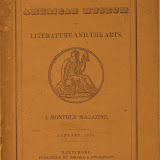It seems like such a small thing, but I find it thrilling to unlock my apartment’s shiny brass mailbox to find a stack of brightly-enveloped holiday cards. Every year, I await their arrival with child-like anticipation. I excitedly check the postmark and return address, then gently peal back the adhesive flap. (Be careful. There may be glitter inside!) I relish the words in ink biting into the paper, the photos tucked inside of younger cousins who are no longer small, the holiday letters telling of loved ones’ joys and sorrows. If there happens to be a gift card from Target tucked inside by a far-away aunt, well, that’s just a bonus. The real joy in these small paper and paste wonders is that someone, somewhere intentionally chose, purchased, inscribed and mailed this lovely remembrance to me. They thought of me, just as I think of the people who have touched my life over the last year as I fill out my holiday cards. With a quiet smile, I pin these magical mementos to a card display wreath, hand-made by a friend years ago, and bustle off to make a cup of cocoa. ‘Tis the season to be jolly.
Since the production of the first commercial Christmas card by Sir Henry Cole in 1843 London, they have been a staple of Christian and non-Christian celebrations alike during this festive time. The archival collection of the Jean Outland Chrysler Library contains many holiday cards to and from people all over Hampton Roads, including the Chryslers. If you’re in the mood for a burst of holiday cheer, please stop by and have a look. We wish you a bright and happy holiday season.
Library Assistant Sara Mason













































